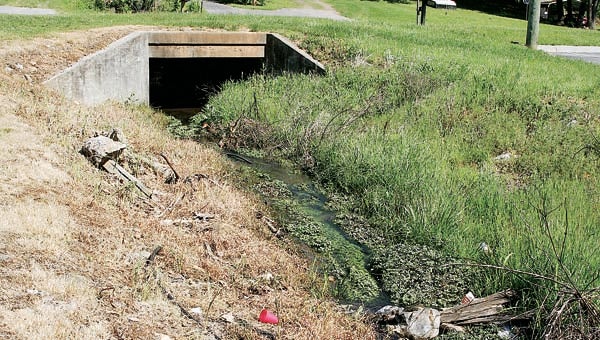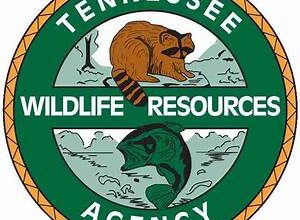Clogged ditches, heavy rain equals spring flooding
Published 12:26 pm Friday, May 1, 2015

Star Photo/Abby Morris-Frye
When culverts and drainage ditches become clogged the debris can prevent water from flowing through and cause localized flooding problems.
Spring rains are wonderful for gardens and flowers, but they can also create havoc for property owners and motorists.
Storm water runoff can damage land, homes and roads and can cause localized flooding.
While the flooding issues seem to come to a head in the spring with increased rainfall, the problems can begin piling up in the fall, according to Carter County Planning Director Chris Schuettler.
“A lot of diversion ditches and culverts get filled up with twigs and leaves,” he said. This debris that falls from trees in the fall and winter can clog up the ditches and culverts, which keeps the water from flowing through like it should and results in backups and flooding. Streams also can get backed up by fallen debris under bridges and in diversion tiles and lead to flooding.
“Then, when the spring rains come in, it really gets hot,” Schuettler said.
In addition to clogged ditches and backed up streams, storm water runoff can become a problem when private properties don’t have appropriate drainage to keep water from running off their property and onto neighboring properties or roads.
Sometimes these issues are caused by the terrain, but they can also be caused by changes to the natural lay of the land for things like construction or landscaping. That is where the Carter County Planning Office steps in.
“We enforce and regulate all ground disturbance activities besides agricultural use,” Schuettler said. The office works under state and federal mandates to manage storm water runoff.
The Planning Office can work with property owners to help solve water runoff issues and allow water to drain away without damaging other properties and roads, Schuettler said.
If a property has drainage ditches in place to help move the water runoff, property owners should try to keep those ditches maintained and clear of debris to prevent flooding and water back up, Schuettler said.
Drainage ditches along public roads and rights of way are maintained by the Carter County Highway Department and Tennessee Department of Transportation, depending on whether it is a county or state road.
While the Carter County EMA deals mostly with the aftermath of flooding rather than prevention planning, the agency helps monitor the conditions of drainage ditches, culverts and clogged streams.
“We try to check on those as we travel around the county,” Carter County EMA Director Gary Smith said.
When Smith or Carter County EMA Training Director Billy Harrell find an issue with water drainage, they report it to the appropriate agency, whether that be the Planning Office, the Highway Department or TDOT.
“We have notified TDOT recently on some culverts up on Highway 91,” Smith said. “There are some culverts there that have some debris built up in them.”
While there have been no serious issues in the County so far this spring, recent weather patterns have brought the potential for localized flooding due to storm water runoff, Smith said.
“The ground is pretty saturated right now, so if we have a heavy rainfall, we could have a serious issue,” he said.





